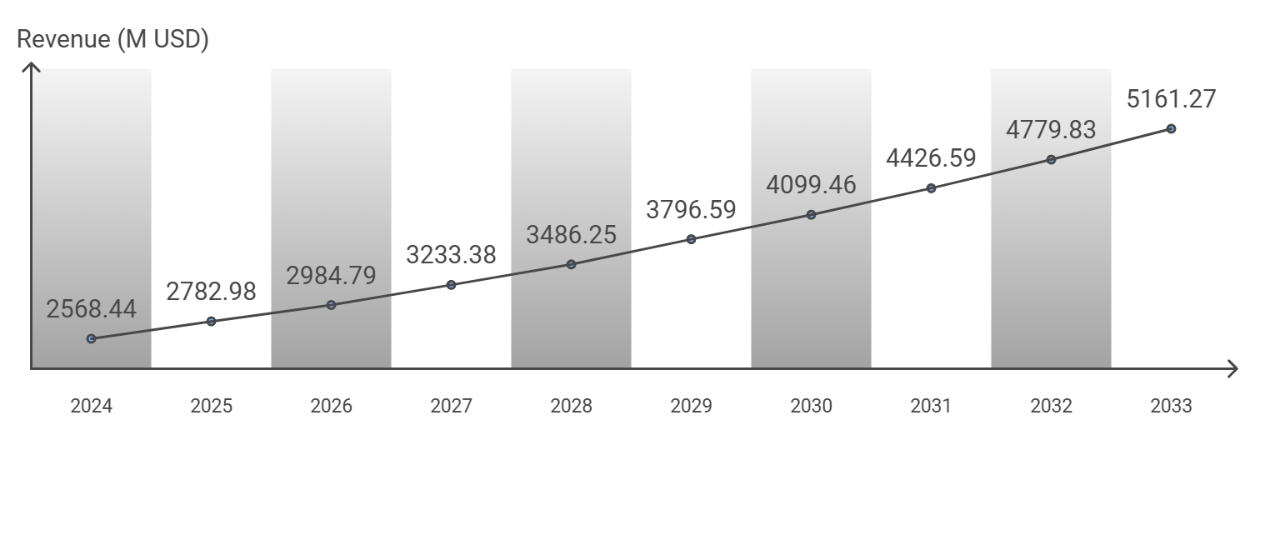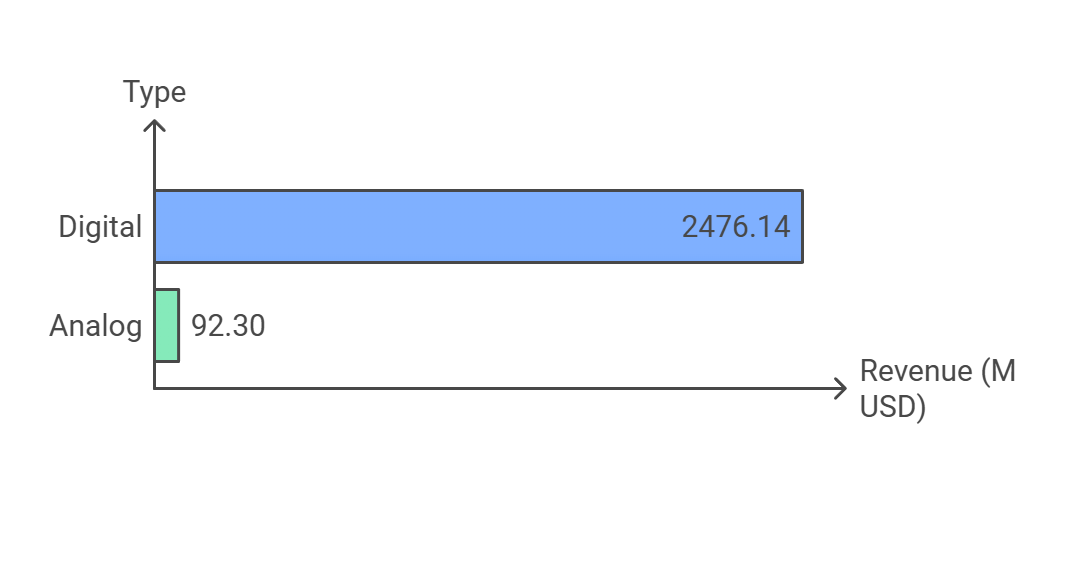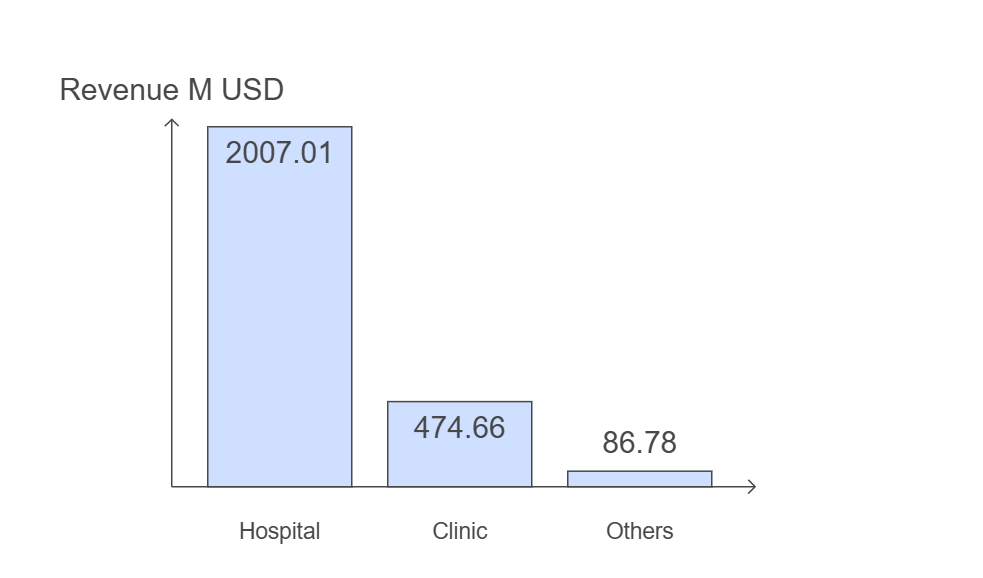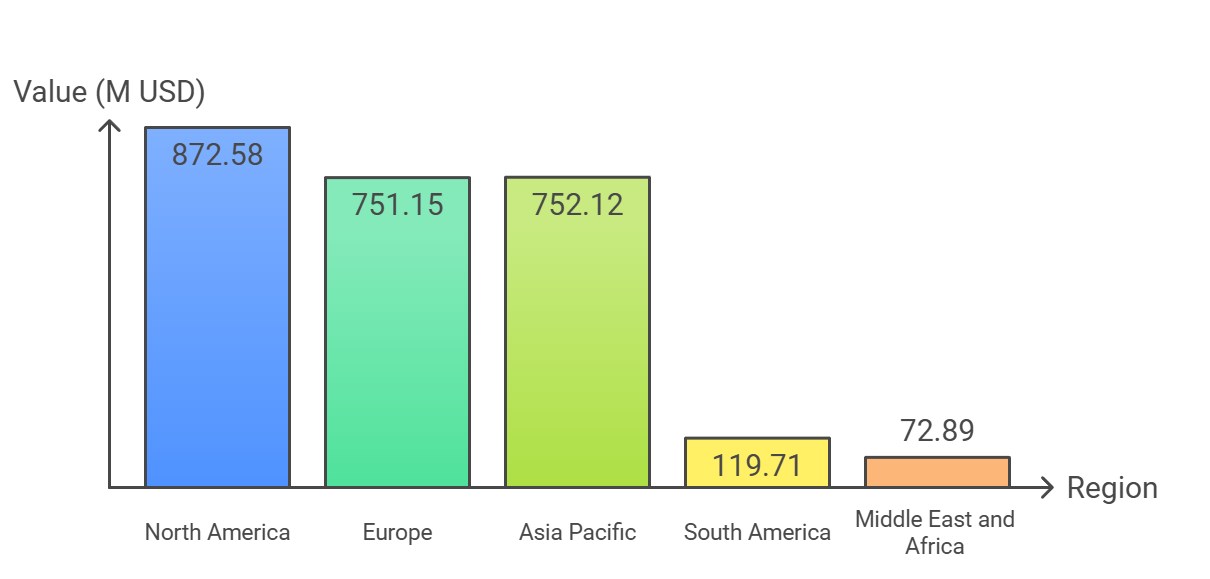1. Global Mammography Machine Market Overview
A mammography machine is a medical device used to image breast tissue and assist in the diagnosis of breast cancer. It is an important imaging diagnostic equipment in the field of mammography, which can be used to examine women’s breast tissue and help doctors detect early breast cancer. Mammography machines mainly include digital mammography machines and analog mammography machines.
The global mammography machine market is anticipated to experience significant growth in the coming years, with a compound annual growth rate (CAGR) of 8.06% from 2024 to 2033, reaching a value of USD 5.16 billion by 2033. The market’s growth is attributed to the increasing prevalence of breast cancer worldwide, advancements in imaging technology, and growing awareness about the importance of early detection and screening.
Figure Global Mammography Machine Market Size from 2024-2033

2. Drivers and Restraints of Mammography Machine Analysis
The market growth is primarily driven by the rising burden of breast cancer, technological advancements in breast imaging, and investments from various organizations in breast cancer screening campaigns. The American Cancer Society estimated that in 2020, there were 276,480 new cases of invasive breast cancer diagnosed among women, with the number expected to increase in the coming years. Additionally, the launch of advanced mammography devices with innovative technologies, such as GE Healthcare’s MyBreastAI Suite, is fueling market growth.
However, the market faces restraints such as the risk of adverse effects from radiation exposure and reduction in reimbursement. Concerns about radiation exposure, especially among younger women, may influence the adoption of mammography machines.
3. Technological Innovations and Corporate Mergers and Acquisitions of the Mammography Machine Market
The mammography machine market has seen significant technological innovations, with a shift towards digital systems and the adoption of 3D technology, which offers better breast cancer detection rates and more advantageous reimbursement scenarios.Companies are also focusing on reducing side effects and improving the efficiency of mammography procedures. Mergers and acquisitions have played a role in consolidating the market, with major players such as Hologic, GE Healthcare, and Siemens Healthineers focusing on technological advancements. For instance, Fujifilm’s ASPIRE Cristalle digital mammography solution received a Health Canada medical device license, expanding its reach in the Canadian market.
4. Global Mammography Machine Market Size by Type
In 2024, the global mammography machine market is segmented by product type, with digital and analog. Digital systems are expected to be the fastest-growing category due to their superior depiction of low-contrast objects, wider dynamic range, and improved diagnostic quality of images.
Digital mammography machines are expected to dominate the market in 2024, with a forecasted revenue of USD 2.47 billion. These systems offer superior image quality and lower radiation doses compared to analog systems. The digital systems segment is growing rapidly due to their ability to provide clearer images, which facilitate more accurate diagnoses. The adoption of digital systems is also driven by the integration of advanced technologies such as artificial intelligence (AI) for improved cancer detection and workflow optimization.
Despite the increasing preference for digital systems, analog mammography machines are still prevalent, especially in regions where cost is a significant factor. The market size for analog systems in 2024 is projected to be USD 92.3 million. These systems use film-screen technology and are considered more affordable, but they lack the image clarity and dynamic range of digital systems.
Figure Global Mammography Machine Market Size by Type in 2024

5. Global Mammography Machine Market Size by Application
The global mammography machine market is anticipated to be significantly segmented by application, catering to various needs within the healthcare sector. Hospitals are expected to account for the largest share of the mammography machine market, with a projected revenue of USD 2.01 billion in 2024. This is attributed to the high demand for breast cancer screening and diagnosis services in hospitals, which serve as primary healthcare providers for a wide range of patient needs. The integration of advanced mammography machines in hospitals allows for early detection and treatment planning, making this application segment a critical part of the market.
Clinics are projected to generate a revenue of USD 0.48 billion in 2024. These clinics often focus on specific areas of medicine, such as women’s health or oncology, and require sophisticated imaging equipment like mammography machines for diagnostic purposes. The growing number of specialty clinics worldwide is expected to drive the demand for mammography machines in this application segment.
The mammography machine market’s growth in these applications is driven by the increasing prevalence of breast cancer, advancements in imaging technology, and the expansion of healthcare facilities worldwide. As the technology becomes more sophisticated and accessible, the demand for mammography machines in various applications is expected to rise, ensuring the market’s continued growth.
Figure Global Mammography Machine Market Size by Application in 2024

6. Global Mammography Machine Market Size by Region
The global mammography machine market is diverse and dynamic, with different regions exhibiting unique market characteristics and growth potentials. In 2024, the market is anticipated to be led by North America, followed by Europe and Asia Pacific.
With a market size of USD 0.87 billion in 2024, North America is expected to dominate the global mammography machine market. This region’s large share is attributed to the high prevalence of breast cancer, advanced healthcare infrastructure, and a strong focus on early cancer detection and treatment. The United States, in particular, accounts for a significant portion of this market due to its extensive network of hospitals and diagnostic centers.
The European market is projected to reach USD 751 million in 2024. The region’s mature healthcare systems and ongoing investments in medical technology contribute to the demand for mammography machines. Countries like Germany, the UK, and France are expected to be major contributors to this market growth, driven by their well-established healthcare sectors and proactive cancer screening programs.
The Asia Pacific region is anticipated to have a market size of USD 752 million in 2024. The market in this region is driven by the growing awareness of breast cancer, increasing healthcare spending, and the expansion of healthcare facilities, particularly in countries like China, Japan, and India. The region’s large population and the aging demographic present a significant opportunity for the mammography machine market.
Latin America is expected to contribute USD 0.12 billion to the market in 2024. Countries like Brazil and Mexico are expected to drive the market growth in this region due to their efforts in improving healthcare services and increasing access to advanced diagnostic tools.
With a market size of USD 0.07 billion in 2024, the Middle East and Africa region is the smallest contributor to the global market. However, there is potential for growth as countries in this region invest more in healthcare infrastructure and cancer screening initiatives.
The regional market dynamics for mammography machines are influenced by factors such as the prevalence of breast cancer, the level of healthcare development, and the economic capacity to invest in advanced medical equipment. As the global population ages and the incidence of breast cancer increases, the demand for mammography machines is expected to rise across all regions, driving the market’s expansion and evolution.
Figure Global Mammography Machine Market Size by Region in 2024

7. Top Companies of Mammography Machine Market
Hologic Inc. is a prominent player in the global mammography machine market, known for its advanced medical imaging systems and diagnostic products. The company has a strong focus on innovation and has launched several campaigns to encourage breast cancer screening, such as the “Back to Screen” campaign in 2020, which aimed to reschedule delayed mammograms due to the COVID-19 pandemic.
Hologic develops, manufactures, and supplies a range of medical imaging systems, including mammography machines that aid in the diagnosis of human diseases. The company offers breast imaging products, GYN surgical products, and skeletal health products. Hologic’s major product offerings include the 3Dimensions™ Digital Mammography System, which utilizes advanced detector technology and innovative imaging to detect invasive cancers with confidence.
In 2023, Hologic reported revenues of USD 752.85 million, with a gross margin of 64.84%. In 2024, the company’s revenues increased to USD 804.61 million, maintaining a gross margin of 65.34%..
Table Hologic Mammography Machine Revenue (2019-2024)
Hologic | 2019 | 2020 | 2021 | 2022 | 2023 | 2024 |
Revenue (M USD) | 528.51 | 443.28 | 530.84 | 649.62 | 752.85 | 804.61 |
Gross (M USD) | 344.25 | 285.35 | 351.01 | 423.13 | 488.16 | 525.75 |
Gross Margin | 65.14% | 64.37% | 66.12% | 65.13% | 64.84% | 65.34% |
GE Healthcare is a leading medical device provider with a wide range of diagnostic imaging and clinical systems. The company has been at the forefront of innovation, launching the MyBreastAI Suite in November 2023 to enhance breast cancer detection and simplify radiology workflows through artificial intelligence (AI) tools. The company’s mammography machine offerings include the Senographe Pristina™ Mammography system, which delivers superior diagnostic accuracy at the lowest patient dose of all FDA-approved DBT systems.
In 2023, GE Healthcare reported revenues of USD 471.18 million, with a gross margin of 62.25%. In 2024, the company’s revenues increased to USD 510.69 million, with a gross margin of 62.97%.
Table GE Healthcare Mammography Machine Revenue (2019-2024)
GE Healthcare | 2019 | 2020 | 2021 | 2022 | 2023 | 2024 |
370.02 | 334.25 | 388.98 | 435.34 | 471.18 | 510.69 | |
Gross (M USD) | 232.64 | 206.14 | 242.61 | 274.45 | 293.31 | 321.58 |
Gross Margin | 62.87% | 61.67% | 62.37% | 63.04% | 62.25% | 62.97% |
Philips Healthcare, part of Koninklijke Philips NV, is a global leader in diagnostic imaging, image-guided therapy, patient monitoring, and health informatics. The company is known for its integrated solutions and advanced technology. Philips Healthcare’s mammography machine offerings include the MicroDose SI, which delivers proven dose efficiency, outstanding image quality, and non-invasive spectral applications in one fast and comfortable mammogram.
In 2023, Philips Healthcare reported revenues of USD 137.14 million, with a gross margin of 62.13%. In 2024, the company’s revenues increased to USD 150.42 million, with a gross margin of 61.88%.
Table Philips Healthcare Mammography Machine Revenue (2019-2024)
Philips Healthcare | 2019 | 2020 | 2021 | 2022 | 2023 | 2024 |
Revenue (M USD) | 110.56 | 94.49 | 108.55 | 126.29 | 137.14 | 150.42 |
Gross (M USD) | 67.49 | 56.66 | 65.62 | 77.45 | 85.21 | 93.08 |
Gross Margin | 61.04% | 59.97% | 60.46% | 61.32% | 62.13% | 61.88% |





